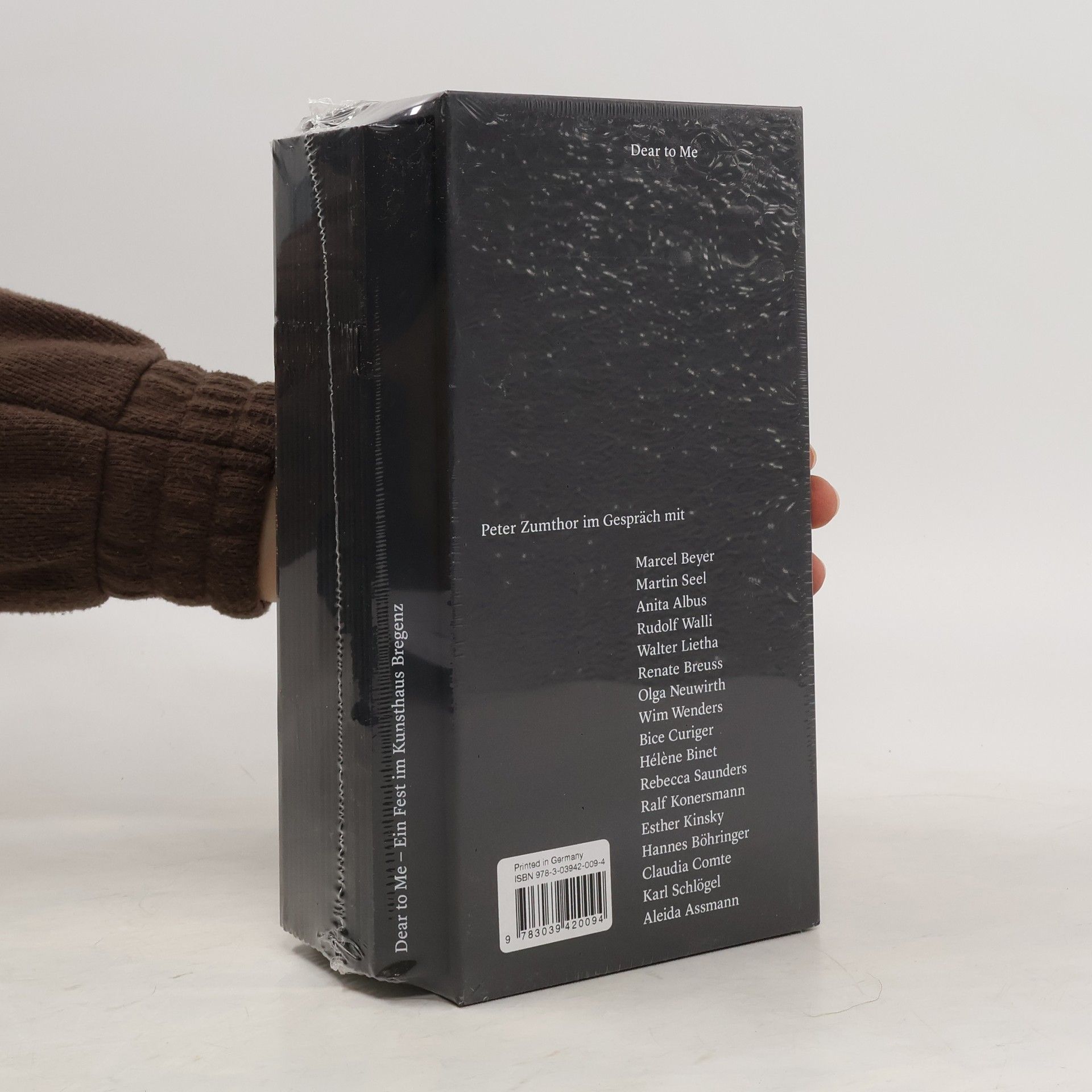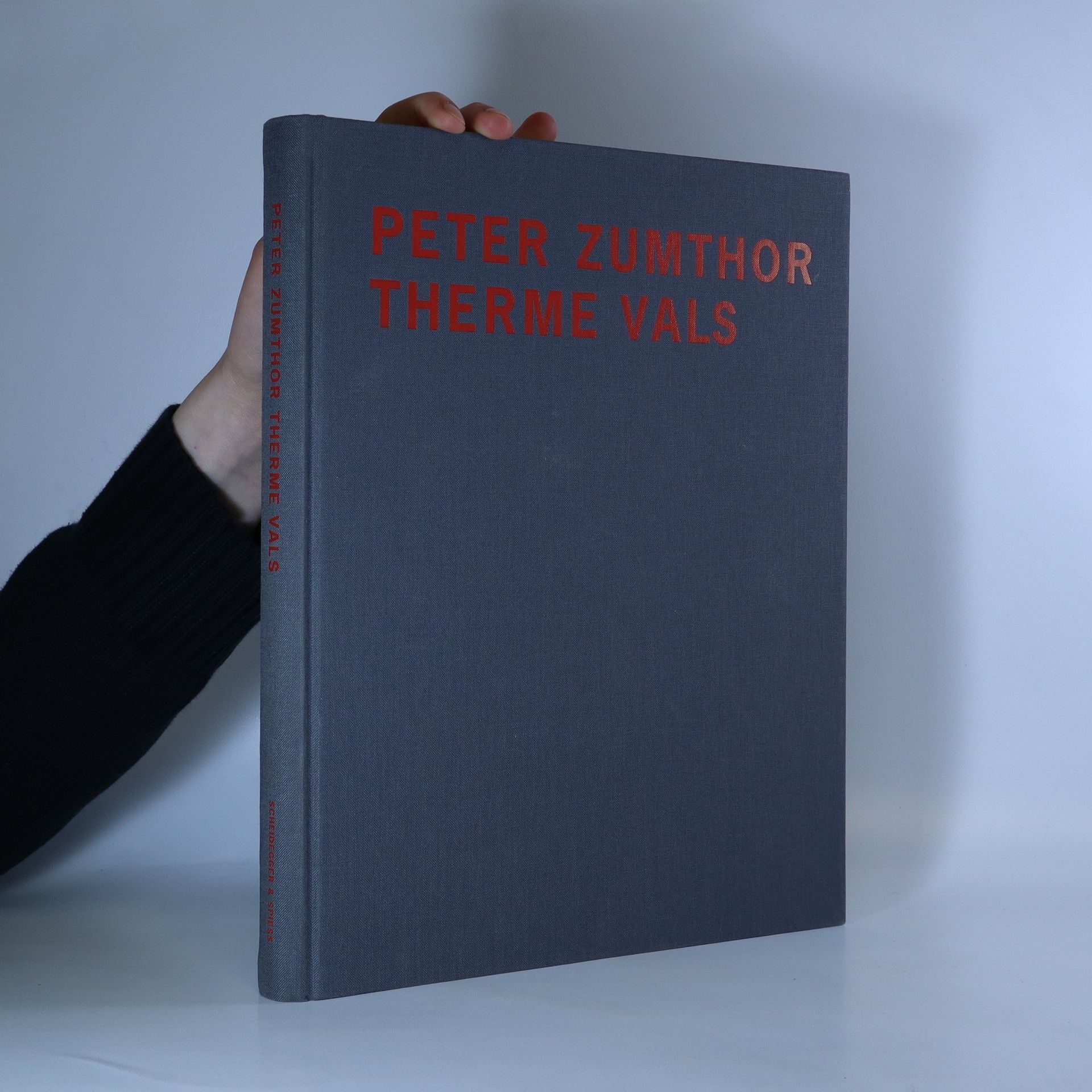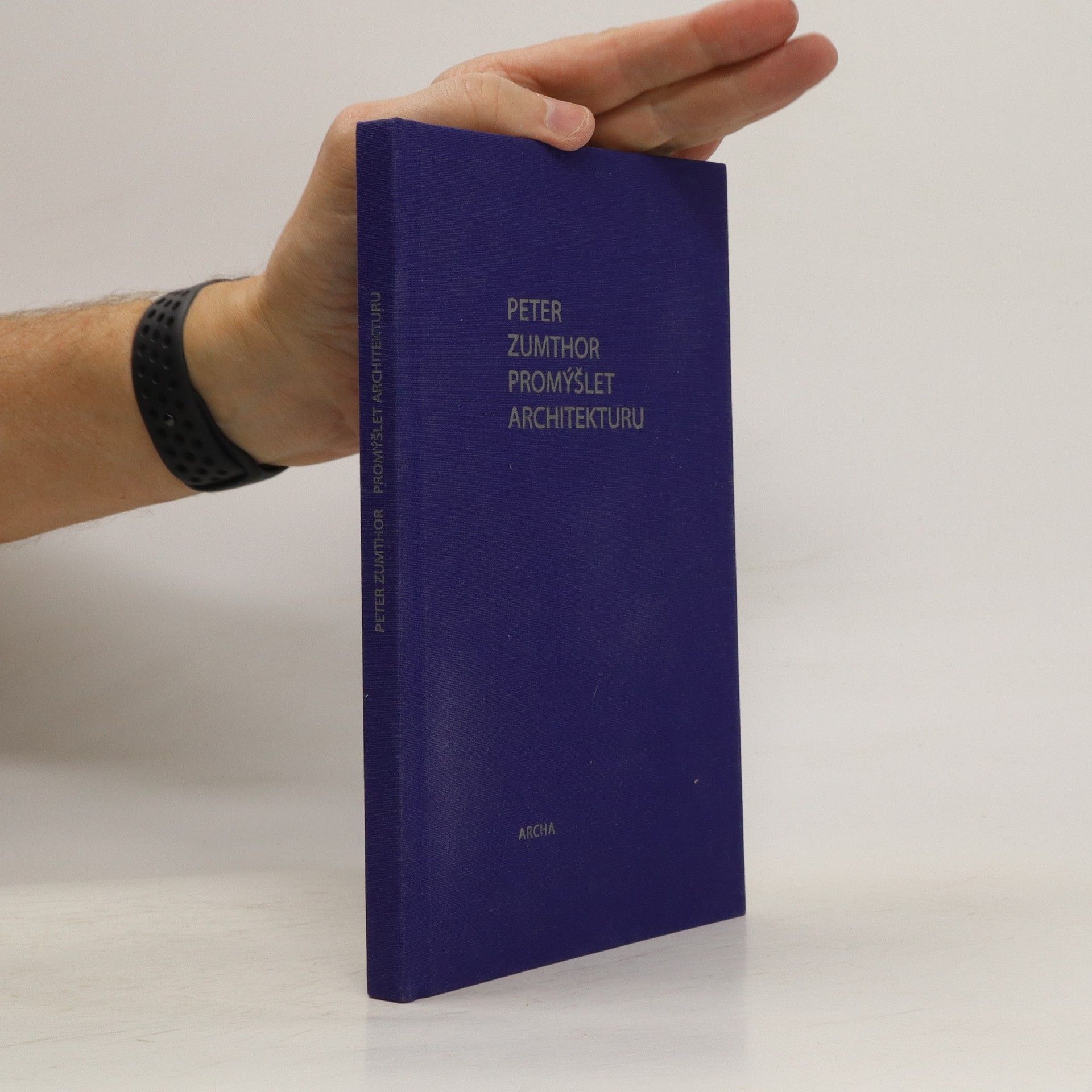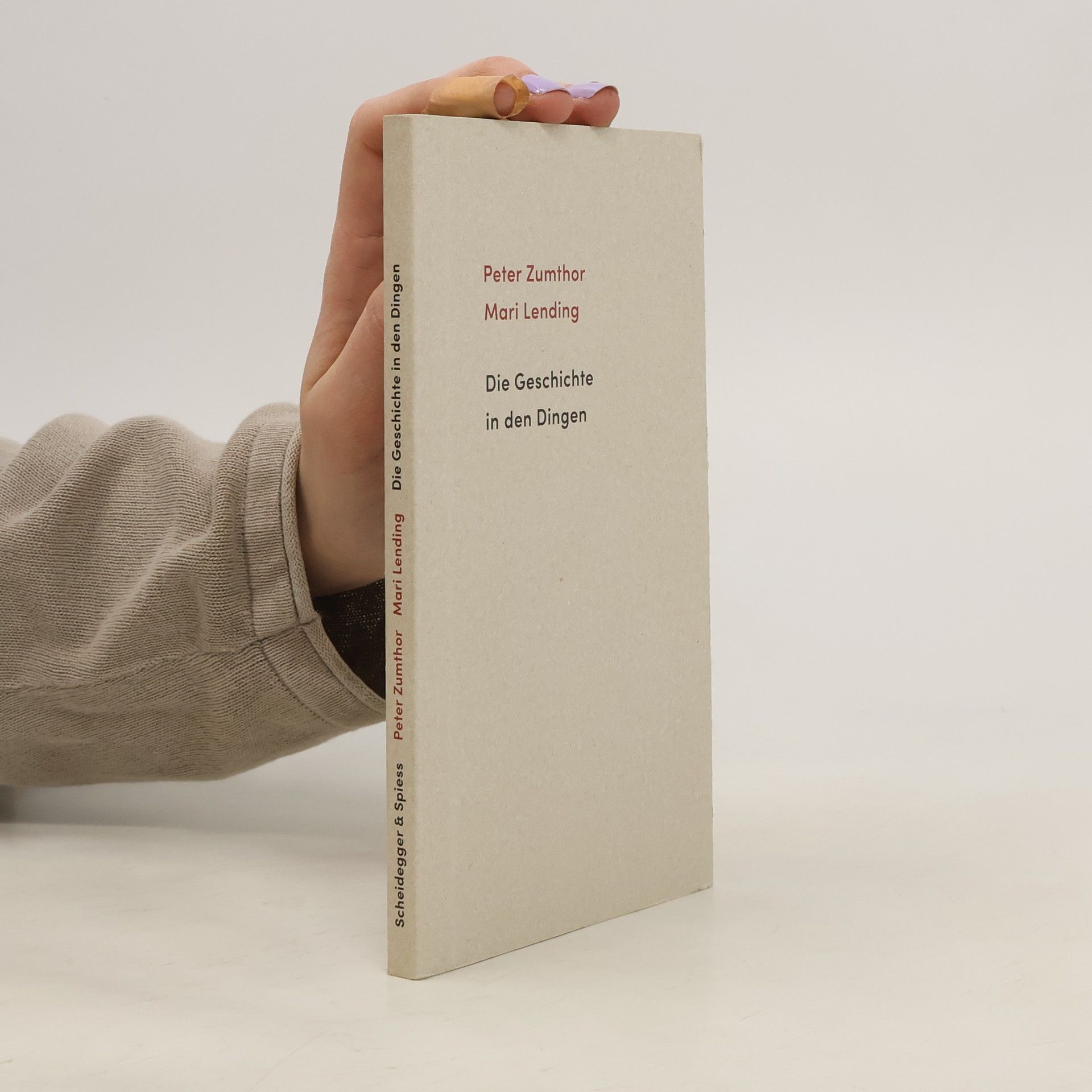Kniha zachycuje přednášku, kterou proslulý švýcarský architekt proslovil v červnu 2003 na literárně-hudebním festivalu „Cesty krajinou“. V devíti kapitolách se autor zamýšlí nad tím, co vytváří pro člověka příjemnou atmosféru, prostor, v němž se člověk dobře cítí, a v jakém smyslu a míře k ní přispívá právě architektura. Na atmosféru, která člověka obklopuje, působí mnoho dílčích impulsů, z nichž některé jsou ryze individuální nebo momentální a některé lze do jisté míry zevšeobecnit. Klade si otázky, jak vymyslet domy, v nichž i v jejich blízkosti by bylo člověku dobře – k tomu bere v úvahu nejrůznější detaily, které ho mohou inspirovat – jsou to obrazy, hudba, dojmy z četby, pohled na krajinu, osvětlení, nahodilé kompozice, vzájemné působení různých materiálů, proporce,… Jak s tím vším zacházet, jak to převést do jazyka architektury? V čem vězí ona magie, která udělá postavený dům krásným a příjemným k pobývání? Autorovo zamyšlení je podáno stejně spontánně, jak byla přednáška proslovena, a ke každé stránce je autorem přiřazena fotografie ilustrující architektovy úvahy.
Peter Zumthor Knihy
Peter Zumthor je architekt, který se snaží o to, aby jeho budovy promlouvaly vlastním jazykem a odolávaly kultu povrchnosti. Věří, že architektura by měla být promyšlenou odpovědí na konkrétní potřeby, místo a společnost, v nichž vzniká. Jeho díla, jako jsou termální lázně ve Valși, jsou příkladem mistrovského využití materiálů a světla k vytvoření atmosférických prostorů. Zumthor klade důraz na jednoduché, ale precizní detaily, které posilují celkovou zkušenost z budovy.







Kultovní kniha esejů švýcarského architekta Petera Zumthora, držitele Pritzkerovy ceny 2009. Pětašedesátiletý architekt cítí uspokojení, že způsob, jakým pracuje si v dnešní uspěchané době zasloužil pozornost a uznání. Zumthor přiznává, že zčásti pracuje jako sochař. "Když na projektu začínám pracovat, tak moje první představa je spojená s materiálem. Věřím, že o tom je architektura. Není o papíru ani o formách, ale je o prostoru a hmotě." Peter Zumthor se narodil v Basileji roku 1943, vyučil se truhlářem. Navštěvuje uměleckoprůmyslovou školu v Bsileji a Patt Institute v New Yorku. Od roku 1979 vlasní ateliér v Haldensteinu ve Švýcarsku. Profesor na Accademi di architektura, Universitá della Svizzera italiana. Nejdůležitější stavby: Zastřešení římských vykopávek, Chur, 1986; Kaple sv. Benedikta, Sumvitg, 1988; Byty pro starší občany, Chur-Masans; Muzeum umění Kolumba, Kolín, 2007. První vydání.
The monograph features the renowned architect's texts, sketches, and drawings, showcasing his creative process and philosophy. It includes new photographs that highlight his architectural works, providing a visual journey through his designs. Additionally, a comprehensive catalog of his projects is included, offering an in-depth look at his contributions to architecture. This publication serves as a significant resource for understanding Peter Zumthor's impact on the field.
Peter Zumthor: Therme Vals
- 192 stránek
- 7 hodin čtení
The beginning was easy. Going back in time, bathing as one might have a thousand years ago, creating a building set into the slope with an architectural attitude older than anything built around it, inventing a structure that could always have existed, one that relates to the topography and geology of the location, responding to the stone masses of Vals Valley—these were the objectives of our design. Peter Zumthor, born in 1943, studied at the College of Applied Arts in Basel and the Pratt Institute in New York. He was awarded the Pritzker Architecture Prize in 2009 for his life’s work, including the Kunsthaus Bregenz and Kolumba Art Museum. His Therme Vals, a spa complex built into a Swiss Alp mountainside, became an icon of contemporary architecture after its 1996 opening. This book-length study features Zumthor’s original sketches and plans, alongside Hélène Binet’s striking photographs. Annotations by Zumthor highlight Therme Vals’s relationship with its natural surroundings, while an essay by architectural scholar Sigrid Hauser explores connections between the spa’s elemental nature and themes of mythology, bathing, and purity. This lavishly illustrated volume will captivate enthusiasts of contemporary design.
Die Schweiz präsentierte sich auf der EXPO 2000 in Hannover mit einer ungewöhnlichen Holzstruktur des Architekten Peter Zumthor. Dieser »Klangkörper Schweiz« beherbergte keine Ausstellung im herkömmlichen Sinne: der Pavillon selbst war das Ereignis. Architektur, Musik, Wort, Modedesign und Gastronomie verbanden sich zu einem Ort der Entspannung, des Genießens und Entdeckens. Da es im Schweizer Pavillon keine Erklärungen oder Verweise gab, wurde für die Gäste dieses Begleitbuch entwickelt. Es gibt Auskunft über nahezu alle Fragen, die sich dem Besucher des Pavillons stellen können, und wirkt so als Bindeglied zwischen dem unmittelbaren »Erlebnis Klangkörper« und der Realität jenseits des Pavillons. Durch die alphabetisch geordneten Stichworte erhält das Buch einen gezielt lexikalischen Charakter aber auch einen eigenständigen Wert: Es entwickelt sich zu einem außergewöhnlichen »Vademecum der Schweiz«, das einen aktuellen Querschnitt durch die Schweizer Kultur präsentiert.
Dear to Me. 18 Hefte
Peter Zumthor im Gespräch. Der weltberühmte Schweizer Architekt spricht mit 17 Menschen, die ihn inspirieren, über Kunst und Kreativität
- 480 stránek
- 17 hodin čtení
In einem tiefgehenden Dialog untersucht Peter Zumthor die wesentlichen Anliegen und Gedanken seines Gesprächspartners sowie seine eigenen. Dabei geht es um die persönlichen und emotionalen Aspekte der Architektur und deren Einfluss auf das Leben. Die Gespräche bieten Einblicke in Zumthors Philosophie und seine Sichtweise auf die Verbindung zwischen Raum, Mensch und Emotion. Durch diese Erkundungen werden die Leser eingeladen, über die Bedeutung von Architektur in ihrem eigenen Leben nachzudenken.
Als Peter Zumthor das Zinkminenmuseum Allmannajuvet in Südnorwegen fertigstellte, lud er die norwegische Architekturhistorikerin Mari Lending zu einem Dialog über das Projekt ein. In ihrem mäandrierenden, impressionistischen Gespräch greifen sie auf ihre Lieblingsschriftsteller wie z. B. Johann Peter Hebel, Stendhal, Nabokov oder T. S. Eliot zurück und tauschen sich darüber aus, welche Rolle Geschichte, Zeit und Vergänglichkeit in Zumthors Gesamtwerk spielen. Zumthor geht der Frage nach, wie ein Gespür für Geschichte seine Versuche einer emotionalen Rekonstruktion durch das Bauen geprägt hat – von architektonischen Eingriffen in dramatische Landschaften bis hin zu seinem Entwurf für die Neuentwicklung des Los Angeles County Museum of Art, wo das Gebäude für einen grossstädtischen Massstab konzipiert wurde. Dieses kleine, schön gestaltete Buch dokumentiert die Konversation zwischen Zumthor und Lending und gewährt einen überraschend aufschlussreichen Blick auf das Werk eines der interessantesten und kreativsten Architekten unserer Zeit. Bereichert wird es von einem Fotoessay der bekannten Schweizer Architekturfotografin Hélène Binet über die gepflasterten Wege des griechischen Architekten Dimitris Pikionis auf der Athener Akropolis.

